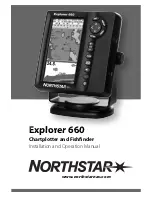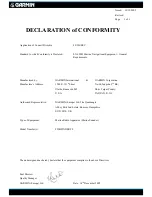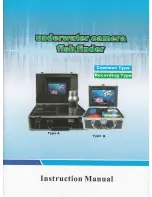
Fishfinder 400C Owner’s Manual
I
nstallIng
the
F
IshFInder
400c
Selecting a Location for a Shoot-Thru-Hull Installation
When installing a transducer, the installation location must be the
following:
• Solid fiberglass, without any air bubbles, laminates, fillers, or
dead air space.
• In an area of clean (non-turbulent) water at all speeds.
• The location must not be over any strakes or behind any
obstruction on the hull that would create turbulence.
NOtE:
Many modern hulls have a dedicated pocket for
shoot-thru-hull transducer installation. If you are unsure if your
hull is equipped with a pre-located pocket, contact your hull
manufacturer.
To test the location:
1. Fabricate a test device from a section of PVC pipe or a can,
as shown in the following illustration.
2. Temporarily seal the test device to the hull with caulking or
RTV sealer, and fill with water or light mineral oil.
3. Place the transducer in the water, pointed directly at
the bottom and weight it down. Set the unit for optimum
performance. If the sonar performance is significantly
degraded, another location must be tested.
Testing the Location
PVC pipe
or a can
Weight the transducer
to hold it in place.
Fill a pipe or can with
water or a light mineral oil.
Hull surface
Strip caulk or
RTV sealer
To permanently install the transducer:
1. Lightly sand the surface of the hull and face of the transducer
with 400 grit wet or dry sandpaper.
2. Build a dam using strip caulk about 1/4" (6 mm) tall. Pour
about 1/8" (3 mm) of two-part, slow-cure epoxy into the dam.
3. Place the transducer in the epoxy, turning the transducer to
work out any air bubbles.
4. Weight the transducer in place, and allow it to cure for
24 hours.
Summary of Contents for Colorado 400c
Page 1: ...Fishfinder 400C owner s manual...
Page 39: ......

































